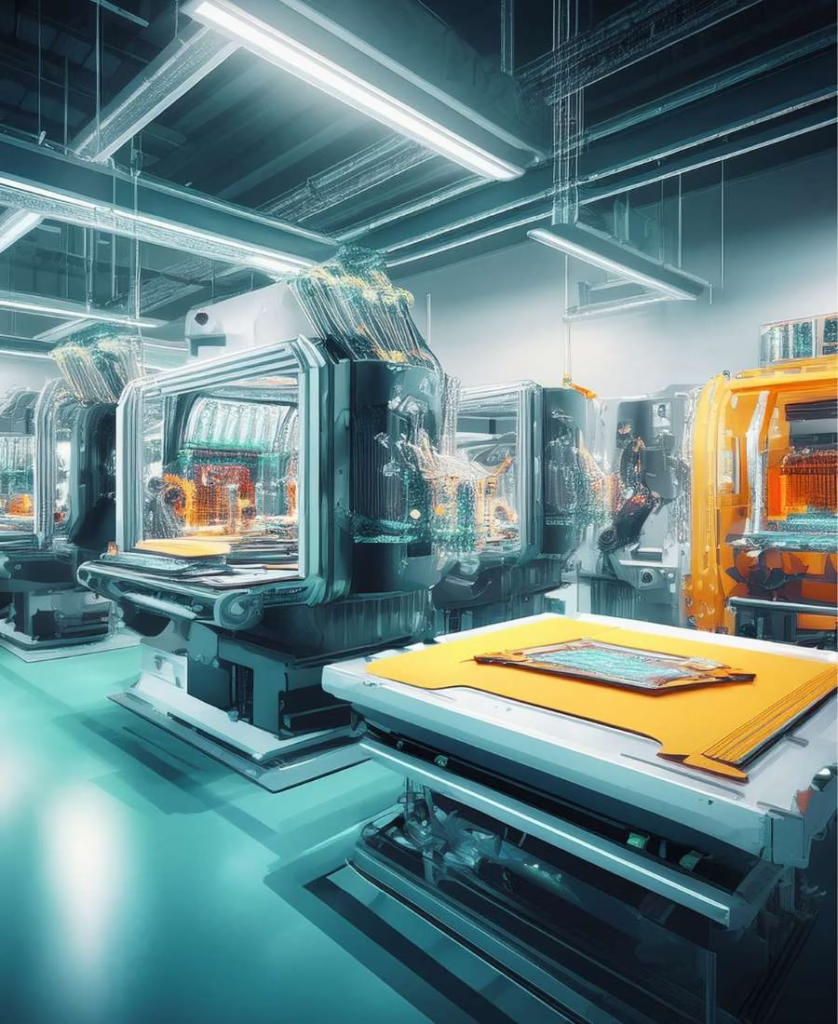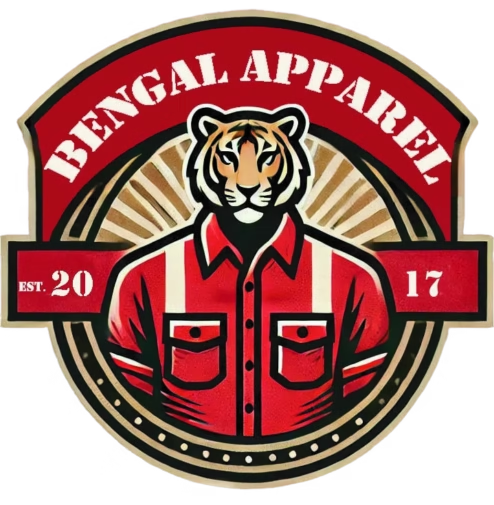In today’s fast-paced, competitive business landscape, companies are constantly seeking innovative ways to enhance their operations and boost their bottom line. One industry that has seen remarkable advancements is uniform manufacturing. With modern technologies like 3D printing, digital fabric printing, and automated cutting, the future of workwear production is not only more efficient but also more creative, sustainable, and cost-effective. This article delves into the cutting-edge technologies in uniform manufacturing, exploring how they are revolutionizing the workwear industry and what this means for businesses worldwide.
Introduction
Uniforms have long been an essential component of corporate identity, safety, and professionalism. Traditionally, uniform manufacturing relied on conventional methods that often involved lengthy production cycles, high labor costs, and limited design flexibility. However, the emergence of advanced technologies in uniform manufacturing has ushered in a new era. Manufacturers now have the tools to produce high-quality, customizable, and durable workwear faster and at a lower cost.
In this comprehensive guide, we examine the transformative impact of technologies such as 3D printing, digital fabric printing, and automated cutting on uniform manufacturing. Our focus is on understanding how these innovations not only streamline production but also drive creative design and enhance product quality. The goal is to provide insights that will help businesses make informed decisions when choosing uniforms that align with their brand values and operational needs.
The Evolution of Uniform Manufacturing
Uniform manufacturing has undergone significant changes over the past few decades. In the past, traditional methods involved manual labor and standard sewing machines, which limited design possibilities and increased production time. These methods often resulted in uniform products that were less durable and lacked the customization that modern businesses require. Today, advanced manufacturing technologies are transforming this landscape, enabling manufacturers to offer uniforms that are not only cost-effective but also innovative in terms of design and functionality.
Traditional vs. Modern Manufacturing Techniques
- Traditional Techniques:
- Manual Cutting and Sewing: Relied heavily on human labor, resulting in longer production times and higher variability in quality.
- Standard Fabric Printing: Limited to basic designs and patterns, with minimal customization options.
- Bulk Production: Often resulted in overproduction and waste due to inflexible production schedules.
- Modern Technologies in Uniform Manufacturing:
- 3D Printing: Allows for rapid prototyping and the creation of complex designs with precise control over material properties.
- Digital Fabric Printing: Offers high-resolution, customizable prints with a wide range of colors and designs, reducing waste and production time.
- Automated Cutting: Uses computer-controlled machinery to cut fabrics with precision, ensuring consistency and minimizing material waste.
These innovations enable uniform manufacturers to meet the increasing demand for high-quality, durable workwear that reflects modern trends and the specific needs of various industries.
3D Printing: Redefining Customization and Prototyping
3D Printing: Redefining Customization and Prototyping
One of the most exciting developments in technologies in uniform manufacturing is 3D printing. This technology has disrupted traditional manufacturing processes by offering unparalleled customization and rapid prototyping capabilities.
Advantages of 3D Printing in Uniform Manufacturing
- Customization:
3D printing allows manufacturers to create bespoke uniform components tailored to specific requirements. For example, intricate design elements such as custom buttons, logos, or even ergonomic accessories can be produced with high precision. This level of customization ensures that uniforms not only fit perfectly but also embody the brand’s unique identity. - Rapid Prototyping:
With 3D printing, manufacturers can quickly produce prototypes for testing and evaluation. This accelerates the design process, enabling rapid iteration and refinement before full-scale production begins. The ability to make quick adjustments minimizes downtime and reduces overall production costs. - Complex Structures and Materials:
Advanced 3D printers can work with a variety of materials, including flexible polymers and composites. This versatility allows for the creation of uniforms that integrate advanced features such as lightweight protective elements, enhanced breathability, and even smart textiles that can monitor body temperature and other vital signs.
Real-World Applications
Manufacturers are beginning to experiment with 3D printing to produce components that enhance the functionality and aesthetics of uniforms. For example, in high-risk industries like construction and emergency services, 3D-printed accessories such as custom-fit patches or protective overlays can add an extra layer of safety. Similarly, in sports and performance industries, 3D printing is being used to create ergonomically optimized gear that improves mobility and comfort.
Digital Fabric Printing: Revolutionizing Design and Production
Another breakthrough in technologies in uniform manufacturing is digital fabric printing. This method has transformed the way designs are transferred onto fabrics, offering superior quality and a level of customization that traditional printing methods cannot match.
Key Benefits of Digital Fabric Printing
- High-Resolution Prints:
Digital fabric printing produces high-resolution, vibrant prints that maintain their color integrity even after multiple washes. This is particularly important for uniforms that require consistent brand colors and detailed designs. - On-Demand Production:
The digital process allows for on-demand printing, meaning manufacturers can produce uniforms as needed rather than in large, wasteful batches. This not only reduces material waste but also allows for quick responses to changing market trends or specific client requests. - Customization and Versatility:
Digital printing enables a high degree of customization, offering endless design possibilities. Uniforms can feature personalized graphics, intricate patterns, or even photographic images, making it easier for businesses to align their workwear with their brand identity. - Cost-Effectiveness:
Although the initial setup for digital printing technology can be high, the long-term benefits include lower production costs, reduced waste, and a shorter turnaround time. This makes digital fabric printing a cost-effective solution for high-quality uniform production.
Impact on the Uniform Industry
Digital fabric printing is revolutionizing uniform design by allowing for rapid changes and updates to designs without the need for expensive retooling. This flexibility is crucial in today’s dynamic business environment, where companies need to keep their branding fresh and relevant. Moreover, digital printing has opened the door for more sustainable production practices, as it significantly reduces fabric waste and energy consumption compared to traditional methods.
Automated Cutting: Enhancing Precision and Efficiency
Automated cutting is another critical component of modern technologies in uniform manufacturing. This technology uses computer-controlled machinery to cut fabrics with remarkable precision, ensuring that every piece is identical and minimizing material waste.
Benefits of Automated Cutting
- Precision and Consistency:
Automated cutting machines use advanced software to plan and execute cuts with high accuracy. This ensures that each uniform is produced with consistent dimensions and quality, reducing the likelihood of errors that can lead to costly rework or waste. - Increased Production Speed:
By automating the cutting process, manufacturers can significantly speed up production times. This efficiency is especially beneficial for large-scale orders, where manual cutting would be impractical and time-consuming. - Material Optimization:
Automated systems are designed to optimize the layout of patterns on fabric rolls, reducing waste and maximizing material usage. This not only lowers production costs but also contributes to more sustainable manufacturing practices. - Reduced Labor Costs:
With automated cutting, the reliance on manual labor is reduced, leading to lower labor costs and minimizing the risk of human error. This makes the overall production process more efficient and cost-effective.
Integration with Other Technologies
Automated cutting systems are often integrated with digital fabric printing and 3D printing processes to create a seamless production workflow. For instance, once a design is printed digitally onto the fabric, the automated cutting system can quickly and accurately cut the printed material according to the specified patterns. This integration results in a highly efficient production process that minimizes waste, reduces turnaround time, and ensures consistent product quality.
The Intersection of Innovation and Sustainability
One of the most compelling aspects of modern technologies in uniform manufacturing is their contribution to sustainability. Advanced manufacturing techniques not only enhance production efficiency but also reduce environmental impact—a critical consideration for businesses today.
Eco-Friendly Materials and Processes
- Reduction in Waste:
Technologies like digital fabric printing and automated cutting significantly reduce fabric waste by optimizing material usage. This efficiency is a key factor in reducing the overall environmental footprint of uniform production. - Energy Efficiency:
Modern manufacturing equipment is designed to operate more efficiently than traditional machinery, consuming less energy and reducing greenhouse gas emissions. This is particularly important for companies committed to sustainable practices. - Use of Recycled and Sustainable Materials:
Many manufacturers are now incorporating recycled fibers and sustainable materials into their production processes. These eco-friendly materials, when combined with advanced technologies, lead to the production of uniforms that are not only high in quality but also environmentally responsible.
The Role of Digital Technologies
Digital technologies play a significant role in promoting sustainability. For example, digital fabric printing allows for on-demand production, which means manufacturers only produce what is needed, thereby reducing excess inventory and waste. Similarly, advanced design software enables the simulation of production processes, allowing for adjustments that optimize material usage and minimize environmental impact.
Enhanced Quality and Consistency
Modern manufacturing technologies ensure that uniforms are produced with consistent quality. High-resolution digital prints, precise automated cuts, and customizable 3D-printed components result in workwear that meets exacting standards, boosting both employee satisfaction and brand reputation.
Cost Savings Over Time
While the initial investment in advanced manufacturing technology may be higher than traditional methods, the long-term savings are substantial. Reduced material waste, lower labor costs, and faster production times all contribute to a lower overall cost per unit. Additionally, high-quality uniforms require fewer replacements, leading to long-term cost efficiency.
Competitive Advantage
Adopting innovative technologies in uniform manufacturing allows companies to differentiate themselves from competitors. Businesses that offer high-quality, customizable, and sustainable workwear are more likely to attract customers who value quality and corporate responsibility. This competitive edge can translate into increased customer loyalty and improved market share.
Sustainability and Corporate Responsibility
In today’s market, consumers and employees alike are increasingly concerned about environmental impact. By investing in technologies that promote sustainability—such as digital fabric printing and automated cutting—businesses can demonstrate their commitment to eco-friendly practices. This not only enhances brand reputation but also aligns with the values of socially responsible consumers.
Flexibility and Customization
The ability to quickly adapt to changing market trends is crucial for long-term success. Modern technologies offer unmatched flexibility in design and production. Companies can swiftly update uniform designs, introduce new features, or customize orders without incurring significant additional costs. This adaptability ensures that businesses remain agile in a dynamic market.
Challenges and Considerations
While the benefits of modern technologies in uniform manufacturing are clear, there are also challenges and considerations that businesses must address:
Initial Investment Costs
The upfront costs associated with advanced manufacturing technologies can be significant. Companies need to assess their budget and determine whether the long-term savings and quality improvements justify the initial expenditure. For many businesses, the return on investment becomes apparent over time through increased efficiency and reduced operational costs.
Training and Adaptation
Adopting new technologies requires training for employees and sometimes a shift in the organizational mindset. Manufacturers must invest in training programs to ensure that staff can effectively operate and maintain new equipment. This transition period is critical for maximizing the benefits of technological advancements.
Integration with Existing Systems
For companies with established production processes, integrating new technologies can be challenging. It’s essential to plan the integration carefully to minimize disruptions and ensure compatibility with existing systems. Partnering with technology providers who offer robust support and training can ease this transition.
Market Readiness
Not every market is ready for rapid technological adoption. Businesses must consider their target market’s readiness for high-tech, customized uniforms. In some sectors, traditional methods may still be preferred due to familiarity or perceived reliability. However, as technology continues to advance, market perceptions are shifting in favor of innovative, sustainable solutions.
Conclusion
The landscape of uniform manufacturing is evolving rapidly with the integration of advanced technologies such as 3D printing, digital fabric printing, and automated cutting. These technologies in uniform manufacturing are revolutionizing the industry by enhancing quality, boosting efficiency, and promoting sustainability. Businesses that adopt these innovations can enjoy significant benefits, including reduced production costs, improved product quality, and a competitive edge in a demanding market.
By investing in modern manufacturing processes, companies can achieve the perfect balance between durability, affordability, and customization. These technological advancements not only streamline production but also contribute to a more sustainable future by minimizing waste and reducing energy consumption. As the uniform manufacturing industry continues to evolve, embracing these technologies will be key to staying ahead of the curve and meeting the dynamic needs of today’s workforce.
In a world where quality and efficiency are paramount, modern technologies in uniform manufacturing are not just a luxury—they are a necessity. The future of workwear production is bright, and businesses that invest in these cutting-edge solutions will undoubtedly reap the rewards in terms of cost savings, product excellence, and environmental responsibility.




